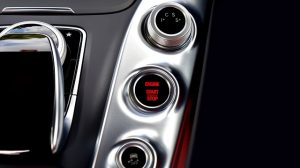Buying a car is not an easy task because you will be confronted with the embarrassment of choice. In addition to the common dilemmas (the choice of model, brand, between a new and a used car), the type of gearbox is a real headache for the buyer. But between a manual and an automatic gearbox, which one is best for you? Before making your choice, weigh the pros and cons of each of these options through this article.
Manual Transmission

The manual transmission is also known as a BVM and is the most common gearbox. It allows you to control the vehicle at 5 or 6 speeds, with reverse, depending on the gear ratios displayed on the lever. Its operation relies on the driver to engage and disengage the clutch.
Its advantages
The main advantage of the manual gearbox, and one that allows connoisseurs to appreciate it, is that it is a real ally in terms of energy savings. It is estimated to reduce fuel consumption by up to 15%. It gives the driver the power to fully control and manage the vehicle’s speeds, depending on each situation and obstacle encountered.
In terms of safety, it is very reliable, as it keeps the brakes in good condition over the long term. This allows you to avoid car accidents caused by mechanical defects and avoid your car insurance intervention.
In addition, it is affordable and convenient because it is easy to maintain, repair, and exchange with another gearbox of the same or another type (automatic or sequential). To take care of repairing, restoring, or replacing manual transmissions, call a garage or an auto transmission specialist.
Its issues

Despite its advantages, the manual gearbox also has some drawbacks. It requires sustained vigilance on the part of the driver because, on the one hand, he must manipulate the lever as often as necessary, depending on the context.
And on the other hand, he must adopt a good reflex, avoiding looking all the time to his right (where his gearbox is positioned) and paying attention to the road. Thus, it makes driving less pleasant for some and makes learning to drive more complicated for others. With the evolution of time, manual gearboxes are likely to disappear.
Automatic transmission
It has a different mechanism than the previous one because it no longer has a clutch, and the gear change does not depend on the driver’s action. Each gear depends on the position of the vehicle. There are 6 kinds of possible positions, namely: the parking position (P), the sport position (S), which is reserved for certain models, the neutral (N), the 1st gear (mode combining the first 2 gears), the forward gear (D), the reverse gear (R).
Its attractions
Automatic transmission is a new trend, especially for the latest models. It offers unequaled comfort for the driver, as it avoids the need to disengage the clutch, and the frequent release of the right hand on the steering wheel, thanks to the fluidity of the gear changes. Moreover, automatic cars are more aesthetic and less cluttered because they only have 2 pedals, the gas pedal, and the brake.
Its challenges

The automatic transmission increases fuel consumption considerably. However, this reality is beginning to disappear with the latest models. It is expensive in terms of purchase price, maintenance, and repair costs. Sometimes it is even classified as the gearbox for the rich. In this respect, the automatic transmission makes the resale price of the vehicle higher. In addition, it is the main source of brake pad degradation. This lack of reliability causes some people to become reluctant to use automatic transmissions. It is also irreplaceable.
Sound off in the comments section below and tell us what you want to read next and if you want to read more about buying a car.




